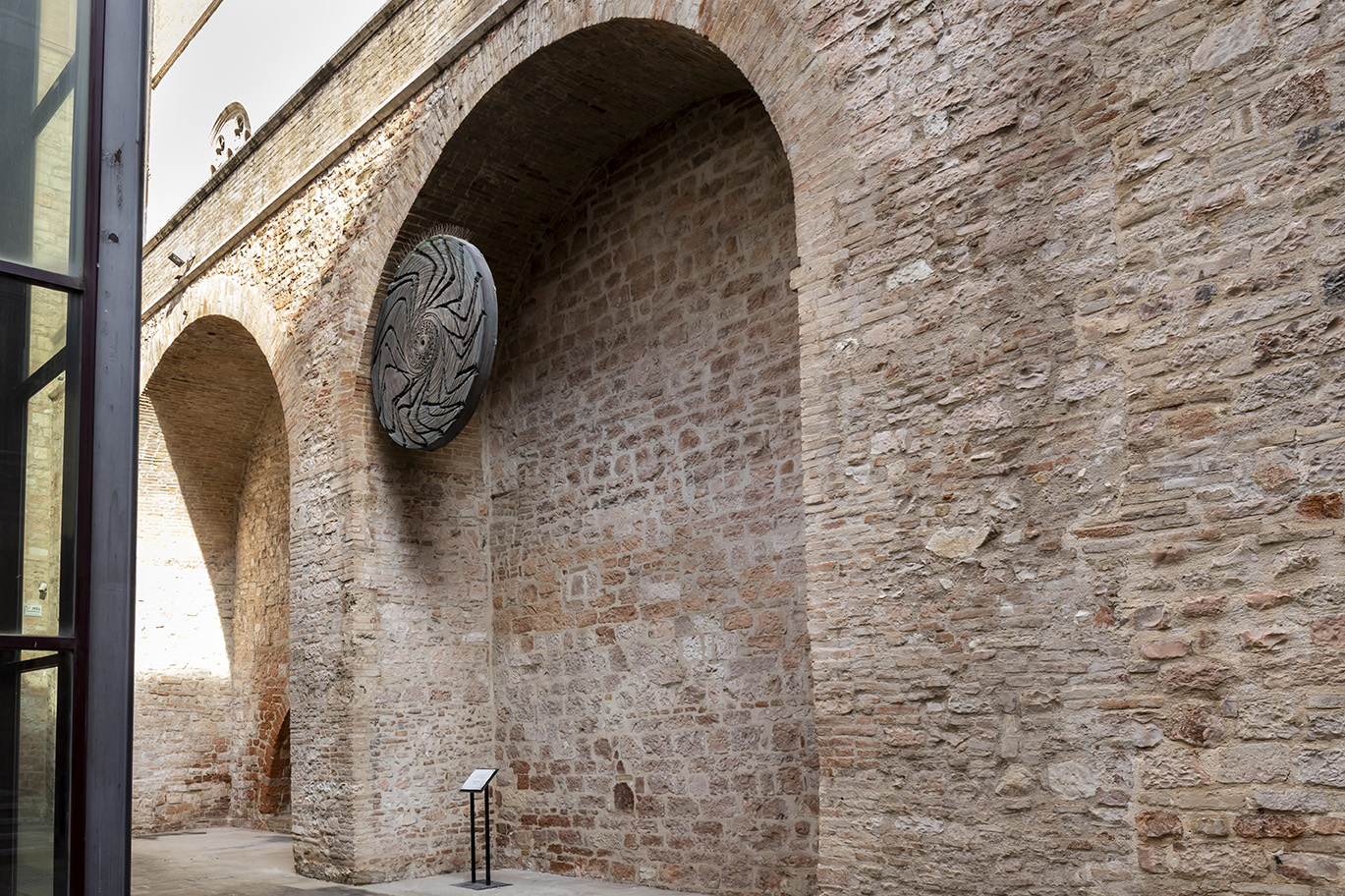Where the Comedy Became Divine
This sculpture celebrates the power of art as a tool for knowledge and reflection. Like Dante, Cardinali explores the origins and destiny of humanity, while also commemorating the first printing of the great Florentine masterpiece, which took place here in Foligno in 1472.

The printing plate from that historic moment is transformed into something truly Divine-just like the Comedy itself, which became the first great example of this revolutionary art form. Stumbling across this sculpture is a celebration of the accessibility of knowledge, made possible by Gutenberg’s invention, in a Foligno that has always represented a crossroads of culture, historical memory, and artistic innovation.
Play and discover special content about this work
Answer the question correctly and unlock special content on this work.
Who wrote the Divine Comedy?
A
Dante Alighieri
B
Cicero
C
Michelangelo Buonarroti
Continue visiting
In Piazza della Repubblica, you’ll find another stumbling stone.
As you walk along Via Gramsci, you’ll encounter two more stumbling stones: one at Piazza Don Minzoni at the start, and another near Largo Carducci at the end.


